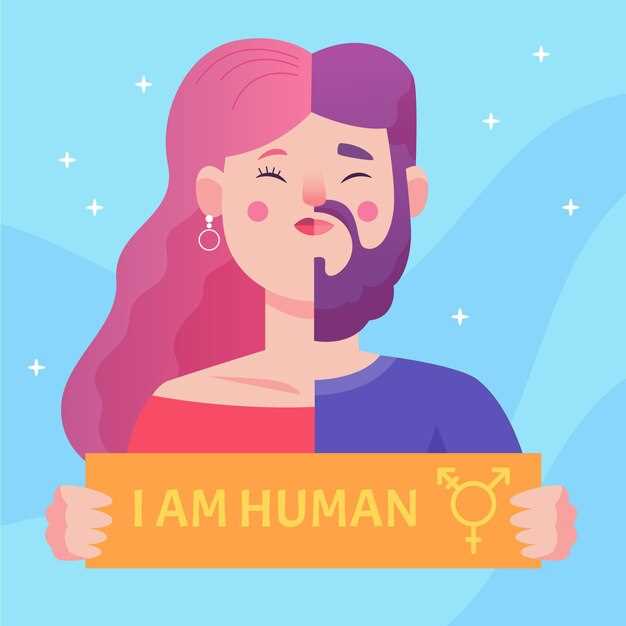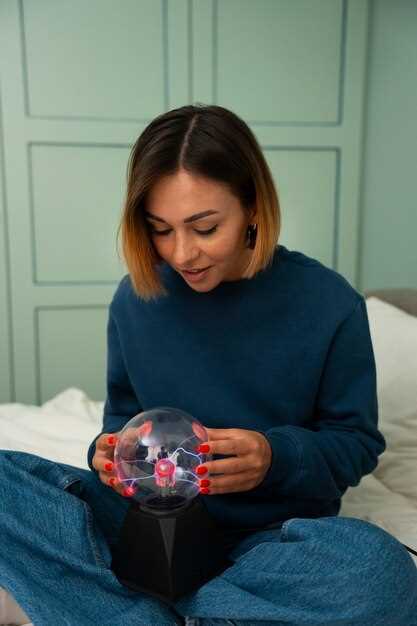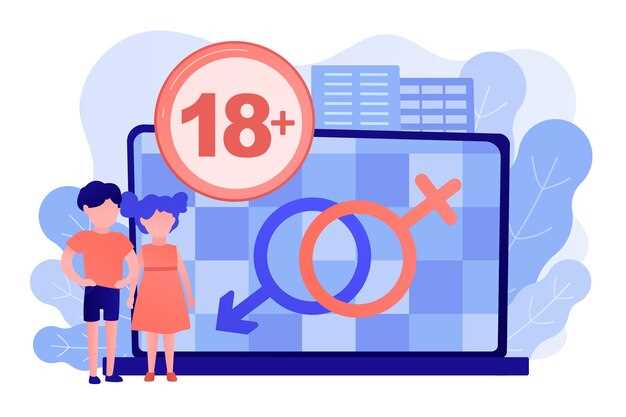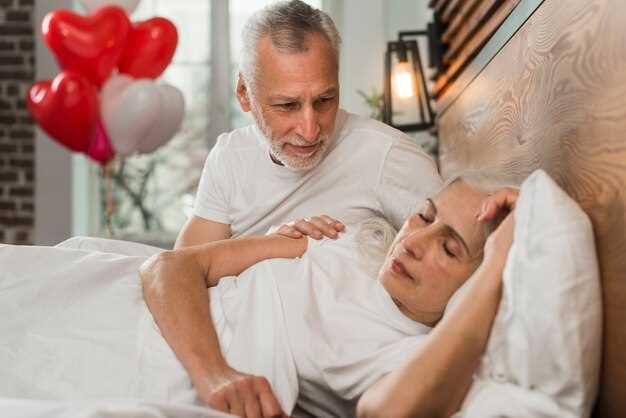Start a 15-minute weekly check-in focused on desire, boundaries, recent experience; randomized trials report couples who keep that habit see a 15–25% rise in satisfaction within eight weeks. Partners often admit awkwardness at first; normalize the pause, use prompts such as “one thing I liked, one thing I want”, track progress through a shared note or app. If improvements stall after two months, consult a certified therapist for targeted strategies.
Reject strict binary models: desire exists on a spectrum which shows multiple peaks across hormonal cycles, life stages, situational cues. Treat libido like temperature; specific triggers raise it quickly, others reduce it slowly. Surveys find around 40% of respondents report overlapping patterns rather than the same predictable profile; note that context shapes responses within similar demographics, though individual variance remains high.
In long-term marriage mens reports often shift toward attachment-driven motivation; rather than spontaneous arousal, theyre more responsive to emotional safety, routine, perceived appreciation. theres research linking cognitive load in the head to lower desire when stress occupies the mind; common reasons include fatigue, unmet expectations, medication effects. Use short experiments to find effective levers: schedule touch that excludes pressure, change timing, reduce distractions, consult a clinician when biological causes are suspected.
Biological and Hormonal Bases of Desire
Measure morning serum total testosterone in symptomatic people; confirm deficiency before initiating replacement therapy, treat sleep apnea aggressively, recommend 150 minutes weekly moderate exercise plus resistance training, target 7–9 hours nightly sleep, reduce alcohol intake, optimize weight with a goal of ≥10% loss when appropriate.
Typical laboratory ranges: assigned-male-at-birth total testosterone ~300–1,000 ng/dL; assigned-female-at-birth total testosterone ~15–70 ng/dL; free testosterone measurement indicated when SHBG is abnormal. Estradiol fluctuates across menstrual cycles; menopause reduces estradiol with frequent negative effects on desire. Prolactin elevations suppress gonadal function; chronic hyperprolactinemia commonly reduces libido.
| Hormone / Neurotransmitter | Typical effect on desire | Practical recommendation |
|---|---|---|
| Testosterone | Drives sexual interest; higher levels correlate with increased spontaneous desire | Measure AM total testosterone; replace when clinically low; monitor hematocrit, lipids, symptoms |
| Estradiol | Modulates genital sensitivity, lubrication; low levels reduce arousal | Consider local/systemic estrogen for symptomatic hypoestrogenia after specialist evaluation |
| Dopamine | Increases motivation, pursuit of sexual activity | Avoid medications that blunt dopaminergic tone when feasible; behavioral activation helps |
| Serotonin | Often suppresses desire; SSRIs commonly reduce libido | Review antidepressant regimen; consider alternatives or adjuncts with prescriber |
| Oxytocin | Enhances bonding, context-dependent arousal | Psychotherapy, partnered intimate contact can increase oxytocin release |
| Prolactin | Elevations decrease libido; acute rise post-ejaculation links to refractory period | Investigate persistent hyperprolactinemia; treat underlying cause |
Medication review is essential: SSRIs, certain antihypertensives, some antipsychotics frequently reduce desire; changing agents or adding mitigating treatment often restores function. For genital issues: recommend topical lubricants, local estrogen for mucosal atrophy, pelvic floor physiotherapy for pain; targeted stimulation of clitoris commonly increases arousal when vaginal lubrication is insufficient. After ejaculation many people experience a prolactin-mediated refractory period; counseling about timing reduces anxiety related to performance.
Psychological contributors are common; prioritize brief validated screening for depression, relationship stressors, sexual trauma, unrealistic expectations. Offer referral to sex therapy or couples therapy when emotional concerns limit desire. Use structured behavioral exercises: sensate focus, scheduled intimacy, gradual exposure to non‑goal sexual touch; set measurable short-term goals with follow-up at 6–12 weeks.
Specific clinical data: randomized trials show topical testosterone in post-reproductive females increases reported desire scores versus placebo at 24 weeks; weight loss trials report mean total testosterone increases of 10–30% within 3 months for people who lose ≥10% body weight. Surveys across reproductive stages looked for similarities in drivers of desire; findings indicate biological signals interact with psychosocial context throughout adult lives.
Selected terms referenced in clinical literature: head, experiencing, such, themselves, behaviors, improving, groups, typically, ejaculation, truth, similarities, from, well, interesting, sexuality, clitoris, before, belief, hard, interest, reaching, driven, that, emotional, desires, talk, body, once, quickly, concerns, very, surveys, tell, thats, looked, hidden, throughout, were, getting, lead, lives, penises
Primary source for clinical guidance and patient information: Mayo Clinic – low sex drive overview: https://www.mayoclinic.org/symptoms/low-sex-drive/basics/definition/sym-20050773
How testosterone and estrogen influence moment-to-moment libido
Recommendation: If you want faster shifts in moment-to-moment libido, combine brief relaxation routines, context changes, targeted stimulation, reliable hormone data, plus pain management when necessary.
Physiology summary: Testosterone modulates desire via rapid effects on neural salience circuits; estradiol modifies genital sensitivity, mood, arousal thresholds, fluid balance. Most acute libido swings correlate with transient rises or drops in free testosterone, circadian variation in total testosterone, or phase-linked estradiol shifts. Recent studies report morning testosterone peaks that often raise spontaneous interest within hours; mid-cycle estradiol peaks can increase genital responsiveness for multiple days.
- Concrete laboratory ranges to reference: typical adult-assigned-male ranges ~300–1000 ng/dL total testosterone; typical adult-assigned-female ranges ~15–70 ng/dL; estradiol ranges vary by cycle phase: follicular ~30–120 pg/mL, peri-ovulatory up to ~200–400 pg/mL. Use lab-specific units when interpreting results.
- Momentary measurement: use ecological momentary assessment (EMA) tools; sample desire ratings several times per day for two weeks; correlate peaks with sleep, meals, alcohol intake, pain flares.
Practical interventions that shift libido within minutes to hours:
- Five-minute paced breathing or progressive relaxation: lowers sympathetic tone; lets libido pathways recover from stress-induced suppression.
- Context switch: brief erotic cues, tactile foreplay, temperature changes; these increase local arousal even without large hormone changes.
- Pain control: if intercourse causes pain during penetrative activity, treat nociceptive sources before expecting desire to recover reliably.
- Topical lubrication or estrogen cream for genital dryness when estradiol is low; reduces down-regulation of sexual response.
Clinical flags that suggest hormonal treatment may be needed:
- Repeated low desire despite enough sleep, nutrition, social intimacy, relaxation; verified by multiple EMA entries plus labs showing subnormal free testosterone or estradiol for assigned sex at birth.
- Sudden loss of libido coinciding with medication start, major illness, surgery, or post-partum changes; recent lab checks recommended within 4–6 weeks.
Notes for diversity: binary models do not capture all patterns; nonbinary people experience multiple hormonal trajectories. A woman on hormonal therapy will have different moment-to-moment dynamics than someone with endogenous cycles. Let yourself track patterns; hearing about another person’s curve does not reliably predict your own.
Final action steps: measure baseline hormones, collect EMA desire data for two weeks, implement 5-minute relaxation plus context changes before sexual activity, treat any pain that arises during penetrative events, consult a clinician if symptoms persist despite these steps.
How menstrual cycle phases change sexual interest in people assigned female at birth
Track ovulation and prioritize intimacy around the late follicular/ovulatory window (roughly days 10–16 of a 28‑day cycle): research has indicated subjective desire and frequency of sexual thoughts increase at a rate of roughly 10–30% versus the luteal phase, so planning short-term can align opportunity with peak libido.
Physiology summary: estrogen and a midcycle rise in testosterone correlate with heightened desire; progesterone rises in the luteal phase and is often associated with reduced interest, fatigue or bloating. Vaginal lubrication varies by person and cycle stage – dryness is sometimes reported during the luteal phase or with hormonal contraceptives – and cramping or pain during menses can lower desire. Note that numerous objective markers (LH surge, basal body temperature, cervical mucus) let you estimate the fertile window rather than guessing.
Practical steps: use ovulation tests or basal temperature tracking if timing is required; add external lubricant when dryness occurs; schedule low‑pressure intimacy and massage focused on relaxation during low‑libido phases; analgesics for menstrual pain can reduce difficulty with penetration. Communicate clear words to partners about availability and consent rather than assuming the same needs every cycle.
Clinical flags: seek evaluation if desire or arousal problems are persistent (>6 months), cause marked distress, or are accompanied by pain – a sexual health or endocrine consult can test hormones and review medications. Hormonal contraception often flattens cycle-linked peaks, so a recent change in contraceptive method may explain altered desire.
Social context: evolutionary metaphors that cast humans as hunter or mating creatures are reductionist; sexual interest is hormone‑driven for many but varies by gender identity, relational context and personal history. Education about normal fluctuations reduces marital friction and unrealistic stereotypes; encourage couples to treat sexual topics as adjustable rhythms, not proof of commitment or lack thereof.
Quick checklist: track your cycle for 2–3 months, note days with higher libido, inform partners of patterns, prepare lubrication for dryness, prioritize relaxation and non‑sexual closeness during low‑desire windows, and consult a clinician if changes are hard to manage or affect relational functioning.
How aging shifts baseline sexual drive in men and women
Recommendation: when baseline libido falls by more than 30% document symptoms, obtain targeted labs, treat reversible contributors, refer to endocrinology or sexual medicine for persistent deficits; for males test total testosterone with morning draws, consider referral if total testosterone <300 ng/dL, for people assigned female at birth assess estradiol, pelvic exam for atrophy, thyroid function, mood screening, medication review, offer topical vaginal estrogen or approved pharmacotherapies where appropriate.
Key numbers: total testosterone declines roughly 1% per year after age 30, erectile dysfunction prevalence was near 40% by age 40 rising toward 70% by 70 years, many people assigned female at birth report significant drops in sexual desires around menopause with a median window of rapid change over 3–7 years; a large longitudinal study suggest variability between individuals, short-term fluctuations were common while steady declines were less frequent.
Mechanisms created by endocrine shifts explain much of the physiology: lower androgens reduce libido, lower estrogens reduce genital blood flow and lubrication which reduces physical pleasure, thermoregulatory changes alter sleep and core temperature leading to fatigue that pushes desire down, comorbidities associated with aging such as diabetes, vascular disease, depression, certain medications were linked with sexual dysfunction in multiple cohorts.
Behavioral and relational factors matter: relationship quality between partners predicts frequency more than baseline hormones for many, those reporting chronic conflict cant expect medication alone to restore desire, couple-based brief therapy focused on communication and shared activity often raises satisfaction with partners; clinicians should ask patients about what they want from treatment, set concrete goals, document progress over months.
Practical protocol: quantify changes using validated scales (IIEF, FSFI) over 3–12 months to separate short-term drops from persistent decline, optimize sleep and exercise, review medications and stop or substitute agents associated with low desire, treat vaginal atrophy to improve pleasure, consider supervised resistance training to raise testosterone modestly, record baseline labs, reassess every 6–12 months, discuss realistic trajectories in plain words so human creatures and their partners understand expectations while further study refines interventions for these topics.
How sleep, nutrition and exercise alter day-to-day sexual energy
Recommendation: Prioritize 7–9 hours of uninterrupted sleep nightly; for most people, each hour below seven associates with a 10–15% drop in next-day desire according to multiple studies.
Sleep physiology explains rapid shifts: sleep regulates testosterone, estrogen, cortisol; reduced REM correlates with fewer morning erections in mens cohorts, diminished arousal in nonbinary samples, increased reports of vaginal dryness among patients.
Nutrition specifics: target 25–35% of calories from unsaturated fats, 1.2 g protein per kg bodyweight for active individuals, ensure daily zinc, vitamin D, omega-3 intake; limit added sugars, processed foods, alcohol beyond two standard drinks per sitting to preserve erection rate in penises and lubrication for vulvovaginal tissue.
Exercise prescription: 150 minutes moderate aerobic activity weekly plus two strength sessions reduces fatigue, boosts basal testosterone by ~8–12% in several trials, improves peripheral circulation crucial for penile tumescence; excessive endurance training at high weekly volumes may lower libido, increase overtraining risk, raise perceived pain during intimacy sometimes.
Timing tactics: schedule intense workouts at least four hours before planned intimacy, avoid heavy meals within two hours of sex, use caffeine 30–60 minutes prior if stimulatory effects benefit your arousal, hydrate consistently to minimize dryness.
Behavioral cautions: frequent viewing of high-novelty sexual content can produce acute arousal yet reduce partner-directed desire over time; several studies looked at habitual use, finding short-term increases in physiological response but declines in relationship satisfaction in some samples once use becomes frequent.
Clinical triggers: patients presenting with sustained low desire, sudden erectile changes in penises, persistent pelvic pain require baseline labs – total testosterone, SHBG, TSH, serum electrolytes, hemoglobin A1c – plus depression screening; if conservative changes fail, referral to sexual medicine specialists is required for targeted therapy.
Misconceptions versus data: common belief states low libido is purely psychological; fact: sleep debt, caloric deficits, micronutrient insufficiencies often play major roles, with people correcting sleep patterns reporting measurable increases in desire within two weeks, sometimes sooner.
Practical daily checklist for tracking: maintain consistent sleep window within 30 minutes, include protein plus healthy fats at breakfast, perform two resistance sessions weekly with three moderate cardio sessions, limit alcohol use, avoid nicotine; track libido rate each morning for 14 days to reveal patterns between sleep, meals, workouts, other stressors, then review findings with clinicians or trusted partners to decide next steps based on observed similarities across times.
Psychological and Social Influences on Sexual Thinking
Recommendation: Ask direct questions about specific desires; tell partners which touch increases pleasure, specify clitoris pressure and rhythm, schedule 10–20 minutes of foreplay plus 10 minutes of relaxation after sex to increase orgasm probability.
Quantitative data: meta-analyses report median intravaginal ejaculation latency time ~5.4 minutes; self-reported orgasm rates during partnered sex typically show male partners at 85–95% rate, female partners at 50–75%; focused clitoris stimulation raises female orgasm rates by roughly 20–30 percentage points, though reported figures differ by methodology.
Relationship context matters: people in committed relationships have been found to have higher frequency of sex; desire levels change across life stages; attraction to opposite-sex others can decrease for some, increase for others; binary categories of sexuality miss numerous, different patterns of desire.
Psychological mechanisms: acute stress lowers arousal; performance anxiety may shorten latency to ejaculation or suppress orgasm; relaxation techniques such as 10-minute diaphragmatic breathing reduce sympathetic activity; progressive muscle relaxation before intimacy has raised arousal measures for many in trials.
Communication tactics: practice telling partners preferences out loud; people really benefit from concrete phrases rather than hints; partners who cant name preferences report lower satisfaction; guided self-exploration helps people tell themselves which stimulation feels best, improving coordination with others.
Behavioral steps: prioritize clitoris stimulation during foreplay; try start-stop or pause-squeeze for premature ejaculation; perform pelvic-floor exercises three times per week; keep a simple log of frequency, orgasm occurrence, perceived relaxation level to track rate changes over 6–12 weeks.
When progress stalls, seek specialty care: sexual health clinicians can assess physical contributors, discuss topical options for ejaculation control, prescribe therapy for persistent desire discrepancies, offer couple-focused strategies that have been effective in randomized trials.














